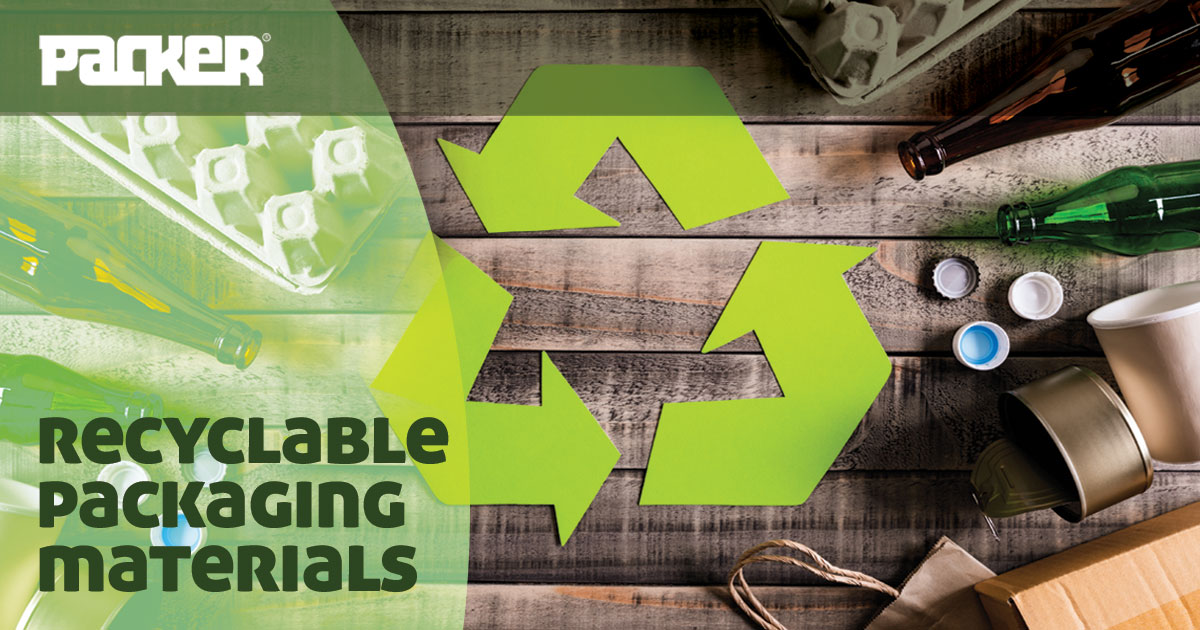
Everyone has to recycle their resources now, from global manufacturing giants to the tiny sole trader who makes customised greetings cards. Recycling prevents unwanted materials and compounds from ending up in landfill – sometimes just for a while, but sometimes forever.
By recycling your materials and also by using goods and products made from recycled or reclaimed materials, you and your company are helping to reduce the uptake of new resources and therefore reducing the carbon emissions hitting the atmosphere.
Where does packaging come in?
Packaging and packing materials are a part of daily life. We tend to hardly notice the boxes, cardboard and void fillers that we deal with (and often bin) every day. We should notice, however, as reducing the use of this ubiquitous commodity or making it greener is a good way to reduce our global carbon emissions and keep the environment cleaner.
Manufacturers and retailers alike are always looking for ways to make their packaging materials more eco-friendly and recyclable, as well as looking for materials that are already recycled.
A lot of the recyclability of packaging depends on where in the world you are, as different regions and countries have different laws and requirements on plastics and paper.
Which packaging materials are recyclable?
Plastics
The good news is that most plastics can be recycled, particularly polyethylene – low density (LDPE) and high density (HDPE), as well as polypropylene.
Paper and cardboard
All paper products can be reused or recycled, including cardboard boxes, tubes, paper tape, packing paper, void fillers and printing paper. Most of the cardboard boxes manufactured in Europe are already using a high proportion of recycled paper in their products.
Metals
The most commonly-used metals in packaging materials are aluminium and steel. There’s ribbon-wound steel, for example, which is used for strapping products together for transit. Then there’s the more familiar form of metal packaging, the tin (in reality aluminium) can and tin foil.
One of the best things about metals is that they can be recycled countless times, whereas plastics have only a few lives to live before they become unusable.
The benefits of using recyclable packaging
There’s a huge demand for environmentally-friendly packaging now, as more and more people become aware of the threat of climate change. If companies use recycled and recyclable packaging products then they’re not only taking their own steps to reduce their carbon footprint, but they’re also inviting their clients and customers to help them, too.
Using recyclable packing materials isn’t entirely selfless. Having some great and obvious green creds helps to build a good reputation and tells the world that the company cares about the environment and the future. This all helps companies to reach new and wider target markets, build loyalty and, ultimately, make more sales.
There are more financial benefits to using recyclable materials
Businesses in the UK already have to pay an annual waste tax, which is based on how much waste it’s produced in the previous 12 months. By using recycled or recyclable materials throughout the business, including packaging, companies can reduce this tax liability.
From April 2022, the UK government is bringing in a Plastic Packaging Tax initiative which requires all plastic products to contain 30% recycled material at the very least. If any packaging materials contain less than 30%, the business will have to pay tax on the shortfall. It makes sense to reduce, reuse and recycle!



